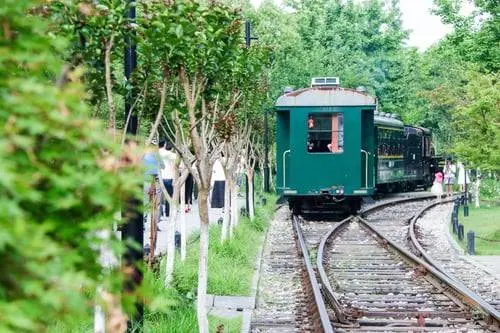Heilbronn Attractions - Bus Heilbronn -. Sindbad
BYTOM

Bytom, a city of rich history and cultural diversity, is one of the oldest and most important industrial centers of the Silesian Agglomeration. Its heritage, closely linked to the development of heavy industry and mining, has left a lasting imprint on the landscape and architecture of the region. However, Bytom is not only an industrial past, but also a wealth of tourist attractions that combine both historical and natural elements.
Upper Silesian Narrow Gauge Railway
Bytom's Upper Silesian Narrow Gauge Railway is not only one of the city's key tourist attractions, but also a valuable technical monument and a unique part of the world's railroad heritage. Having its origins in the mid-19th century, it is the oldest continuously operating narrow-gauge railroad in the world, surpassing even some British counterparts.
The first tracks of this railroad began to be laid in 1851, and by 1853 the network was already more than 30 km long. The Upper Silesian Narrow Gauge Railway initially served industry, playing a significant role in the development of regional mining and industry. Their uniqueness lies in the continuity of operation since their inception, which includes the period of two world wars, the Silesian uprisings and other significant historical events.
Bytomka Valley: a Green Oasis in the Heart of the Industrial Landscape
The Bytomka Valley, part of Bytom's landscape, is a unique example of how post-industrial areas can be transformed into a place full of greenery and recreation. This section of the Bytomka River, stretching about 20 kilometers between Lagiewniki and Szombierki, represents the most human-altered section of the river, located in areas that once witnessed intense mining and industrial activity.
The revaluation work that took place in 2017-2019 has transformed the face of the Bytomka Valley, transforming it from a neglected industrial area into an attractive place for recreation and relaxation for residents and visitors. Thanks to these measures, the Bytomka Valley has become an oasis of natural beauty, where visitors can enjoy the river and surrounding green areas.
Characteristic of the Bytomka Valley is the combination of elements of nature and industrial heritage. The area of the valley lies between Knights' Shaft, Ostatnia, Frycza-Modrzewskiego and Lagiewnicka streets, and its landscape is steeped in industrial history, which adds to the place's unique character. It's a place where history and nature combine to create a unique space for walks, picnics and other outdoor activities.
Frog Pits
Frog Pits, located on the border of Bytom, Chorzow and Piekary Slaskie, is a unique natural and landscape complex, representing one of the most interesting examples of revitalization of post-industrial areas in Upper Silesia. Covering an area of 226.2 hectares, the Frog Pits were protected in February 1997, mainly for their ornithological value.
Characteristic of the area are heaps, sinkholes and post-industrial reservoirs, which are testimony to the region's industrial past. They are surrounded by meadows, woodlands, farmland and trackways, creating a mosaic of different ecosystems. As a result, the Frog Pits are home to many species of birds and other animals, making them an attractive destination for nature watchers and bird lovers.
Bytom Market Square
The focal point of the market is the Lion sculpture, which, although it may seem ordinary, is a popular place for children to meet and play. The market is surrounded by historic townhouses, which, although sometimes in need of restoration, give the place an authentic character. In addition to them, modern buildings can be found here, testifying to the dynamic development of the city.
BYTOM - list of coach stops:
- Stan. przy dworcu autobus.obok PKP, Pl.Wolskiego 1
SINDBAD coach stop:
BYTOM - list of international connections:
© 2025 Sindbad
Technical support, assistance, payments: Sindbad IT
© 2025 Sindbad
Technical support, assistance, payments: Sindbad IT
